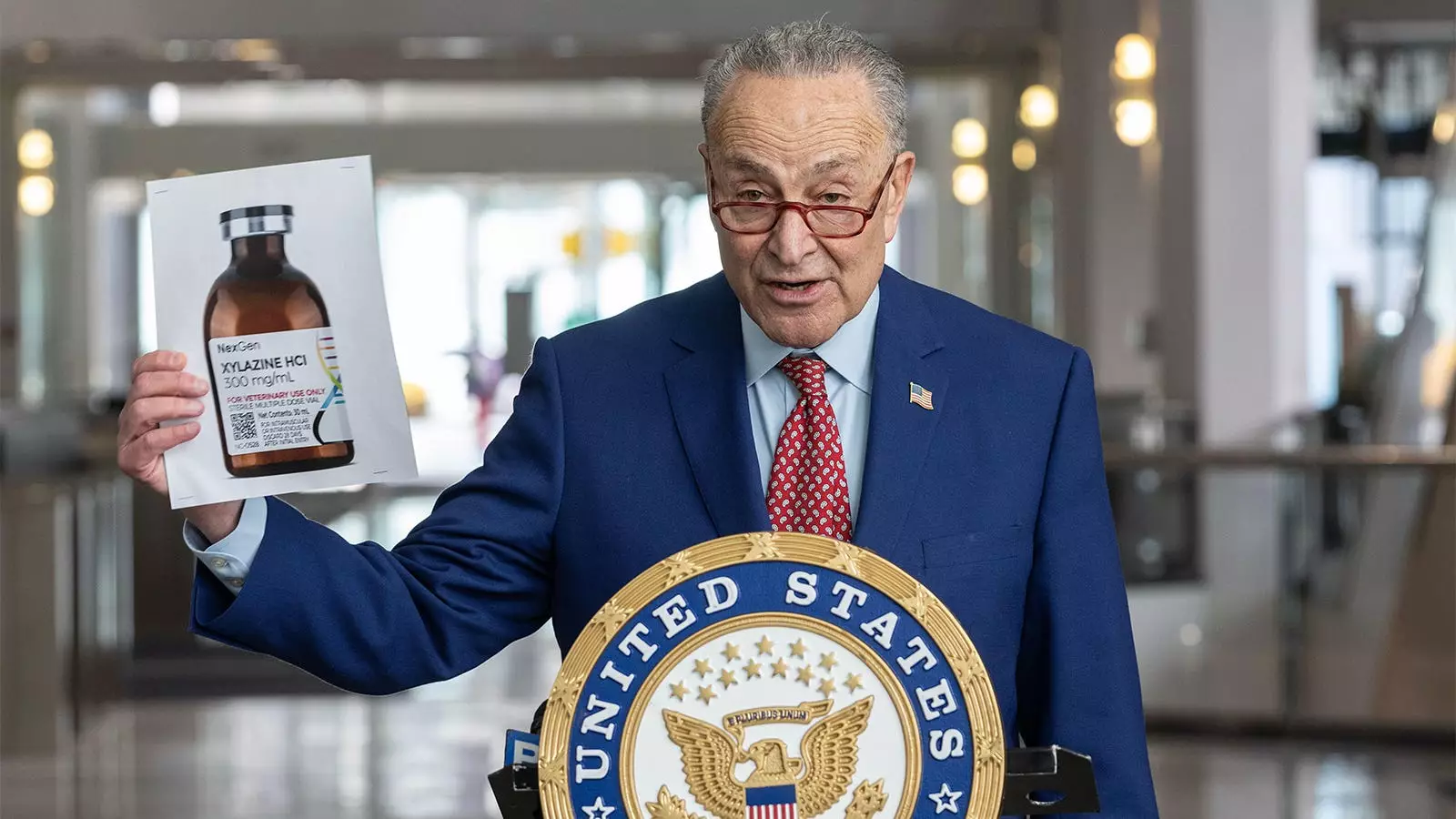In February, alarming reports began to spread among healthcare professionals regarding the inclusion of xylazine, a veterinary tranquilizer often referred to as “tranq,” in illicit fentanyl. This dangerous combination aimed to enhance the effects of fentanyl and extend its duration. However, the consequences of xylazine use were significant, resulting in necrotizing wounds that afflicted injection drug users. Philadelphia emergency medicine physician, Joseph D’Orazio, MD, described the severity of the situation, stating that amputations had become more common due to the development of severe necrotic wounds, dysfunctional limbs, and bone-deep infections.
Since concerns over xylazine-laced fentanyl arose, regulatory bodies and lawmakers have taken action to tackle this issue. The FDA, the White House Office of National Drug Control Policy (ONDCP), and Congress have initiated various endeavors to gain control over the situation.
The FDA implemented an import alert on xylazine in late February, empowering their staff to detain any shipments of xylazine products that violated the law. The agency emphasized the importance of ensuring proper labeling, absence of adulteration, and legitimate use for veterinary purposes during their review process.
In April, the ONDCP declared xylazine-tainted fentanyl as an “emerging drug threat,” highlighting the need for immediate action. This marked the first time a substance had received such a designation at a national level. The agency took further steps in July by publishing a National Response Plan aimed at coordinating a comprehensive government response against xylazine-laced fentanyl. The plan encompassed various strategies, including increasing testing for xylazine among users and law enforcement, improving data collection on its use, disrupting the supply chain, and exploring regulatory options under the Controlled Substances Act. The ONDCP also sought updates from the Drug Enforcement Administration (DEA) and the Department of Homeland Security on the sources of illicit xylazine.
On December 12, the House of Representatives passed the Support for Patients and Communities Reauthorization (SUPPORT) Act of 2023 with an overwhelming majority of 386 to 37. This legislation, also known as H.R. 4531, includes a significant provision to categorize xylazine as a Schedule III substance under the Controlled Substances Act. This reclassification aims to curb its misuse while ensuring continued access for veterinarians and ranchers to use it for animals.
In addition to the provisions related to xylazine, the SUPPORT Act contains several other measures focused on addressing substance abuse. One such provision focuses on providing fentanyl education for first responders. The act also guarantees that individuals covered by Medicaid have access to medication-assisted treatment, supporting efforts to combat the opioid crisis. The American Veterinary Medical Association (AVMA) expressed its support for the passage of the bill, particularly commending the inclusion of the xylazine language. AVMA President Rena Carlson, DVM, emphasized that the provision equips law enforcement with necessary tools to combat the illicit use of xylazine, while preserving its legitimate role as an animal sedative within the veterinary field. The AVMA committed to further collaboration with lawmakers and staff to address the emerging public health threat posed by xylazine.
Despite the progress made with the SUPPORT Act, some experts express concerns and caution regarding the involvement of the veterinary industry in legislative processes. Andrew Kolodny, MD, an opioid policy and addiction medicine expert at Brandeis University, warns about potential discrepancies in the regulation of xylazine. He asserts that regardless of whether a molecule is produced legitimately or illicitly, it should be subject to the same laws and requirements once scheduled as a controlled substance. Dr. Kolodny suggests that xylazine manufacturers, distributors, and veterinarians should not receive exemptions from tracking and storage regulations that are typically imposed on Schedule III drugs.
Regulatory Pathways and the Need for Further Assessment
The scheduling of controlled substances can occur through two pathways: congressional action or collaboration between the FDA and the DEA. In early February, it was reported that the DEA had conducted an “8-factor analysis” for xylazine, an essential step in the DEA-FDA scheduling process. Additionally, the AVMA stated its active engagement with relevant Congressional offices and committees discussing the scheduling of xylazine. It remains to be seen whether the SUPPORT Act will successfully pass the Senate.
Unfortunately, quantifying the extent of the xylazine-laced fentanyl problem nationwide is challenging due to the lack of a comprehensive tracking system for xylazine-positive overdose deaths. Not all jurisdictions routinely test for xylazine in postmortem toxicology, making it difficult to gather accurate data. The DEA acknowledges this limitation and recognizes the need for a more thorough assessment.
The emergence of xylazine-laced fentanyl has triggered a series of efforts from regulatory bodies and lawmakers to combat this dangerous combination of substances. The implementation of an import alert by the FDA, the designation of xylazine as an emerging drug threat by the ONDCP, the publishing of the National Response Plan, and the passage of the SUPPORT Act in the House of Representatives represent significant steps in addressing this issue. However, concerns and controversies surrounding legislative processes and the veterinary industry’s involvement remain. As the journey to control xylazine-laced fentanyl continues, further assessments and collaborations among healthcare professionals, regulatory bodies, and lawmakers are essential to protect public health and safety.

Leave a Reply